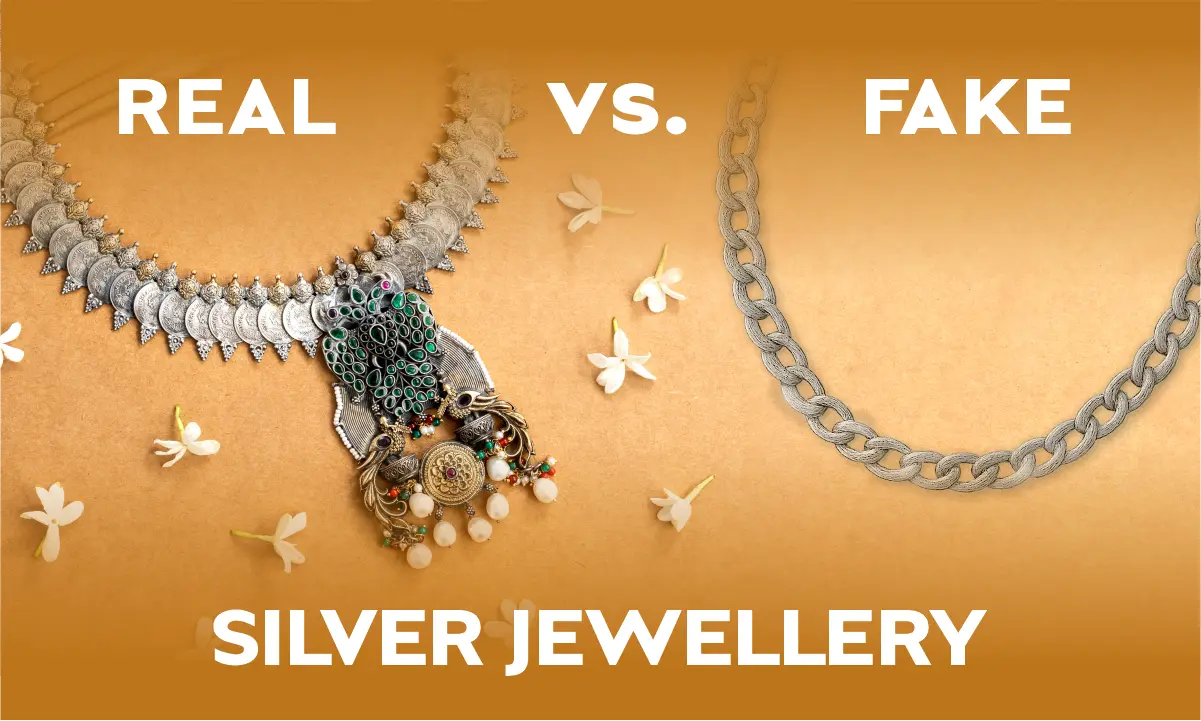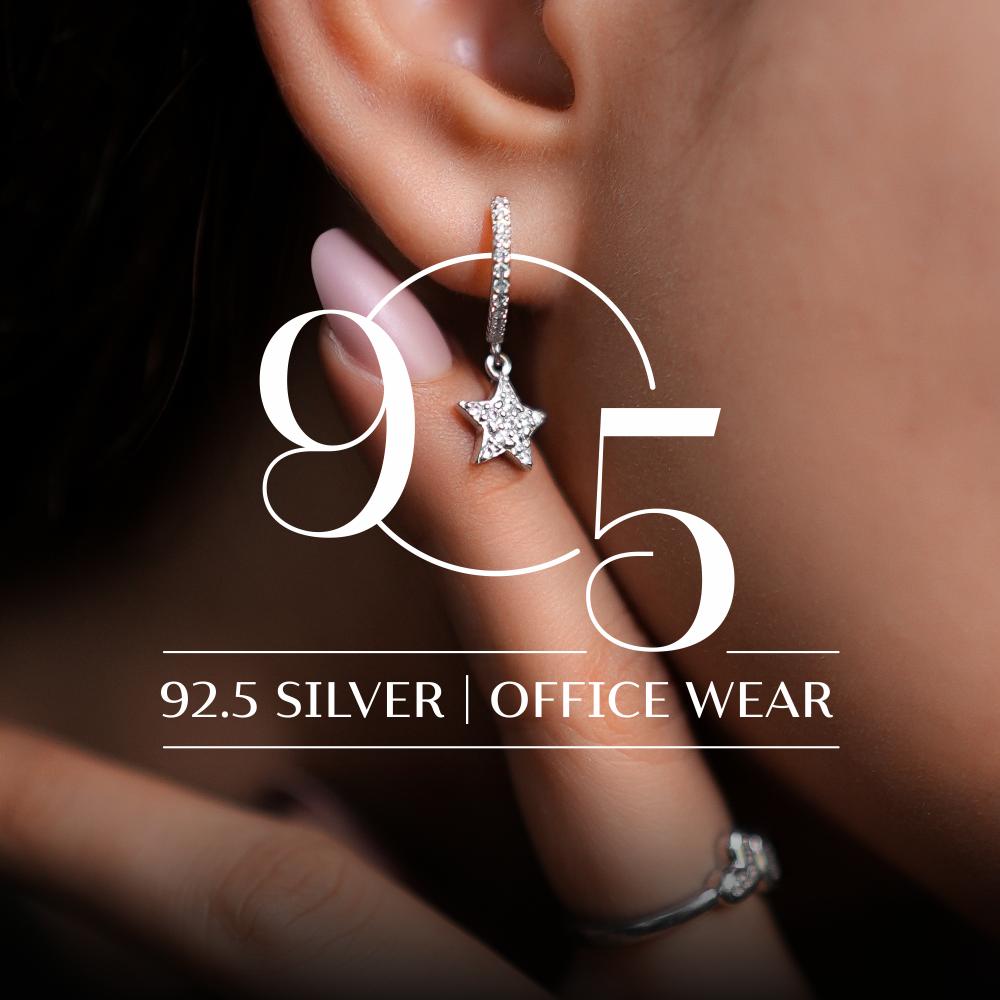
How to Identify Real vs Fake Silver Jewellery
Silver jewellery has long been admired for its understated beauty, cultural significance, and affordability compared to gold. In recent years, the demand for sterling silver, especially in the form of dainty everyday wear, has risen sharply. Alongside this rise, however, has come an influx of counterfeit and low-quality pieces that often mislead buyers. Learning how to identify real silver from imitations is not just about ensuring value for money—it also protects you from durability issues and skin irritations that often accompany fake metals.
When it comes to jewellery, authenticity matters. Genuine 925 sterling silver is made up of 92.5% pure silver and 7.5% other metals, usually copper, to provide strength and durability. This is why it carries the name “925”. Anything lower in quality may look convincing at first glance, but it lacks the longevity and purity of real silver.
The Importance of Hallmarks
The first and most reliable indicator of authenticity is the hallmark. Genuine silver jewellery is almost always stamped with identifiers such as “925”, “.925”, or the word “Sterling”. In India, certified jewellers may also carry the Bureau of Indian Standards (BIS) hallmark, which ensures purity standards have been met. These tiny engravings, often found on the inside of rings, the clasp of chains, or the underside of bangles, serve as the jeweller’s guarantee. That said, counterfeiters sometimes replicate hallmarks too, so while the stamp is an important starting point, it should not be the sole factor in deciding authenticity.
Physical Properties That Distinguish Real Silver
One of the simplest ways to distinguish silver from imitations is by observing how it behaves physically. Silver is not magnetic, which means that if you hold a magnet to it and it sticks firmly, it is likely made of a cheaper alloy such as steel or nickel. However, a lack of magnetic pull does not always confirm authenticity either, since some fake alloys are also non-magnetic.
Weight can also offer clues. Silver has a higher density than metals such as aluminium or brass, so genuine silver jewellery feels heavier in the hand compared to similarly sized fakes. Professional jewellers sometimes confirm this by using water displacement to measure density precisely, but even a simple side-by-side comparison can give buyers a useful indication.
Another property is silver’s excellent thermal conductivity. A quick “ice test” demonstrates this well: if an ice cube is placed on a silver surface, it melts noticeably faster than it would on plastic or stainless steel. This may seem like a curious experiment, but it’s actually a very practical indicator of silver’s natural qualities.
Reactions with Chemicals and Tarnish
Silver reacts in predictable ways when exposed to certain substances. For instance, when a drop of nitric acid is placed on real silver, it produces a creamy or greyish colouration, while base metals often turn green or bluish. This is a conclusive test but should only be performed by a professional, as nitric acid is highly corrosive and unsafe for casual use.
Tarnish is another natural characteristic of silver. Over time, genuine silver develops a dark grey or blackish layer due to exposure to sulfur in the air. While some people dislike this change, it is actually a good sign of authenticity. The tarnish can be polished away easily, restoring the shine. Fake silver, on the other hand, may either remain unnaturally shiny, show no tarnish at all, or reveal red, yellow, or green tones from the underlying base metals once the outer layer wears off. Even something as simple as rubbing the jewellery with a soft white cloth can help—real silver often leaves faint black marks on the fabric due to its tarnish, while imitation metals do not.
The Sound of Silver
Although less common today, experienced jewellers sometimes rely on sound to test silver. When tapped gently with another piece of metal, real silver produces a distinctive clear, ringing tone. Counterfeit metals usually produce a duller or muted sound. This method is most effective for solid items like coins or bangles rather than delicate pieces such as chains.
Professional Testing Methods
For complete certainty, especially in the case of high-value or antique pieces, professional tests are available. One of the most accurate is X-ray fluorescence (XRF) analysis, which reveals the exact composition of the metal without causing damage to the jewellery. While such technology is not something every buyer can access, reputable jewellers and hallmarking centres often use it to verify purity and reassure customers.
Common Red Flags for Fake Silver
There are a few tell-tale signs that often give away counterfeit silver. If the jewellery looks unnaturally shiny or has a chrome-like finish, it may be silver-plated rather than sterling. Plated jewellery will eventually peel or flake, exposing brass or copper underneath. Prices that seem too good to be true are another strong warning sign—silver follows a market rate, and if a seller offers large pieces at a fraction of the normal price, authenticity is doubtful. Similarly, jewellery sold without hallmarks or from unverified sources should always be treated with caution.
The Health Factor
Beyond financial loss, fake jewellery can affect health as well. Nickel and other base metals commonly used in imitations often cause skin reactions such as rashes, itchiness, or discolouration. Genuine 925 sterling silver, by contrast, is hypoallergenic and safe for most people to wear regularly. This is one reason sterling silver is such a popular choice for sensitive skin and for daily-wear accessories.
Why Buying from Trusted Sources Matters
The best way to avoid counterfeit silver is to purchase from trusted jewellers and established brands. Certified sellers ensure every piece is hallmarked and crafted to international standards. In India, jewellers with BIS certification provide the additional assurance of government-regulated purity checks. At Silvogue by Ranka, for example, every design carries the guarantee of 925 sterling authenticity, backed by the legacy of one of Pune’s most respected jewellery families.
Conclusion
Identifying real versus fake silver jewellery requires a mix of observation, simple at-home experiments, and, where necessary, professional verification. From hallmarks and tarnish patterns to thermal conductivity and chemical reactions, silver’s unique properties make it distinguishable to the trained eye.
In a marketplace where counterfeits are increasingly common, being informed is the buyer’s greatest protection. When you invest in authentic sterling silver, you are not only buying a piece of jewellery—you are buying durability, safety, and timeless beauty.
For Valentine’s Day gifts, anniversaries, or daily wear, the confidence of knowing your jewellery is genuine makes all the difference. With Silvogue’s hallmarked sterling silver collections, authenticity is guaranteed—ensuring every piece you choose carries the brilliance and trust your love deserves.




